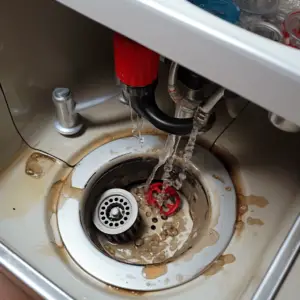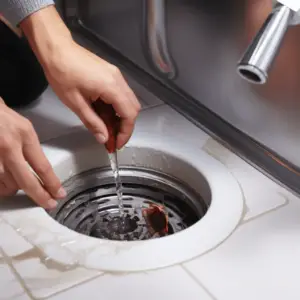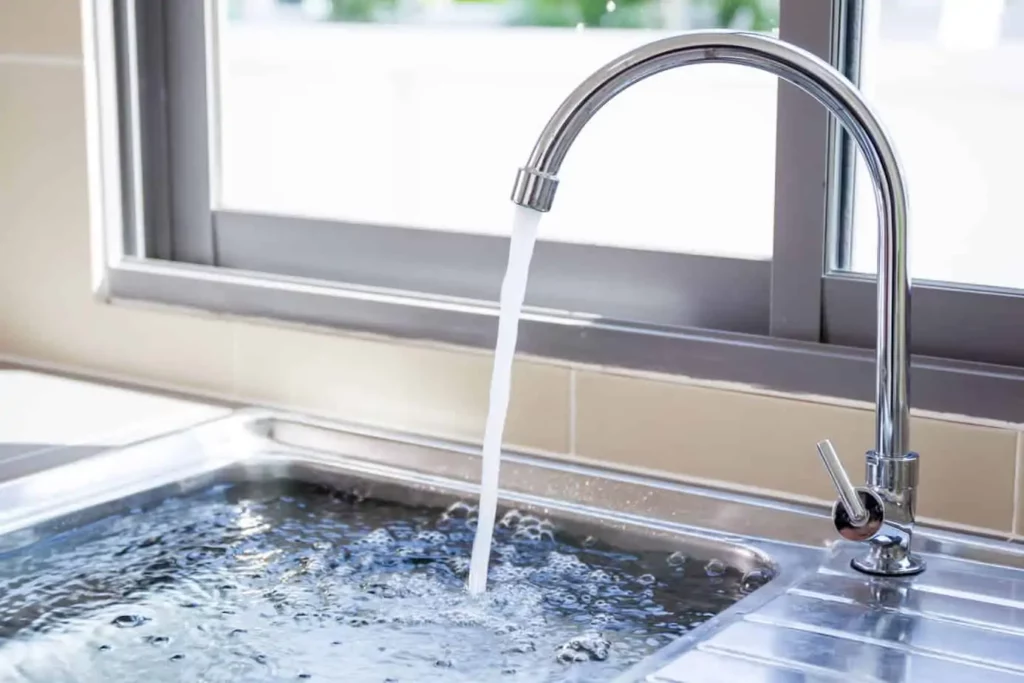Unclogging Stubborn Sink Drains, Have you ever experienced the inconvenience of a clogged drain? I am doing my dishes after a long day at work only to notice that the water isn’t draining from the sink. I double-checked to see whether something blocked the drain opening, but there was nothing.
A clogged drain is a common problem every homeowner faces at some point. The solution lies in arming yourself with a simple and quick way to clear the blocked drain. Just as I got myself that fateful night, it might be your case—no plumber who can sort you out at that time of the night.
But cheer up because, in the article, we look at stubborn drain clogs, and most importantly, the plumber can be on hold because we will show how you can fix it. Let’s get started.
Table of Contents
The “P” Trap Clog

“P” trap is a common area for a blocked drain. It is the fitting under the sink with a big dip in it like the U. In contrast to what is known by many, the “P” trap does not collect the items that drop from the sink drain, but its purpose is to hold water that generally blocks the drain pipe.
The “water Plug” prevents sewer gas fumes, in your septic system, from rising back to the house. Remember that soaps, conditioners, shampoos, and other lotions have a similar effect as grease and oil in the kitchen.
They glaze the piping, including the P-trap area creating a fatal place for clogs to form. Hair can also grab hold here, causing clogging.
How to unclog a sink that is blocked past the P-trap
You may not require the costly services of a professional plumber to fix the clog. Follow the methods right below; you can fix it with ease.
- Pour boiling water down the drain.
- Use white vinegar down the drain.
- Pour baking soda down the drain.
- Use a plunger
- Unscrew and clean the sink’s P-trap
- Use the plumber’s Snake
Pouring Baking soda Down the Drain
Baking soda is an excellent substance for freeing up blocked pipes. Pour a half-cup of baking soda down the drain using a funnel and let it settle on the clogged debris for like 3 minutes.
Not only will the foam break the debris but also it will get rid of the foul smell emitted by the rotting debris. Unlike other chemicals that can irritate your skin, baking soda is safe and affordable.
White Vinegar
Pour the acidic content of white vinegar to break up the food residue clogging the pipe, and as a result, there will be the formation of foam and some bubbles. Let the reaction continue for a few minutes to diffuse into the debris in the pipes.
Vinegar: A natural deodorizer, vinegar will also eliminate all odors emanating from the pipe.
Boiled water
Hot water removes food and cooking oil that clogs the pipe leaving it clean and unclogged.
Vinegar, Baking soda, and Hot water Combo
You can mix baking soda and white vinegar, pour the mixture down the sink drain, and pour boiling water down the drain multiple times. The process is more effective and eliminates odors.
How to Fix a Clogged Drain after Cleaning
After trying to unclog your sink using 1-3 ways, which is still clogged, it is time to use more engaging methods. Read on
Inspect Drain under the Sink
Find access to the clogged point by inspecting the drain under the sink, as this will assist you in figuring out how you can safely unclog the drain. Tighten everything before opening to ensure the issue is not related to the connecting points in the setup.
Turn Off Water Supply
Turn the water supply to the sink to prevent it from spraying at the time of cleaning upstart.
Only access the drain in the walls with a strategy for a good result
Access Drain in the Wall
Unclogging Stubborn Sink Drains is the essential step in the process. You will aim to access the drain in the wall by removing the plumbing connecting to that spot to fully access the drain spot without any distraction.
After removing the fixture, check what is happening on the inside of the pipe, and you will get to fix the issue.
Plunger
The tool is perfect if the sink is still clogged. Plunge up and down on the drain around ten times to drain the stagnated water in your sink.
If you are blessed to have a double sink, ensure the other side is well plugged before you start, to keep the seal intact and prevent water from sparkling out the other side.
Place the plunger over the drain in your sink to create a suctioning effect, then firmly pump down until the water begins to clear out. Once the still water is all drained, run clean water to ensure it functions properly.
Remember to be cautious when pumping the drain, as you would draw more food and water back to the sink. So pump it gently while releasing the plunger’s grip on your sink.
Ensure you use a sink plunger for four cups of water displacement, meaning it has double the plunging power over other plungers to unclog your sink even past the trap.
Use a plumber’s Snake

When the clog is way deeper in the P-trap or beyond the pipe, a drain auger/ plumber snake is designed for the purpose. They further reach and unblock the pipe through a mere rotation inside the pipe.
The clogs that are super stubborn need a plumber’s Snake. The tool has a coiled spiral snake that reaches down into the drain. Once it has hit an obstruction, crank the handle to dislodge the dirt and pull it out of the drain.
Electric snakes are superior in tackling clogged drains.
Unclogging Stubborn Sink Drains don’t have a plumber’s Snake, never mind, for you can make one with a coat hanger. Using a pair of needle-nose pliers to disintegrate the wire into a long piece of wire, keep the hooked end for grabbing onto the debris.
After done, put everything together and see if the water is flowing through properly.
Fixing a clogged sink past the trap after cleaning is mainly done using a plunger or a plumber’s Snake. These tools are effective in unclogging the stubborn debris that is stuck in the P-trap.


